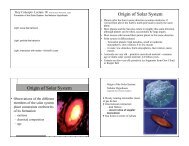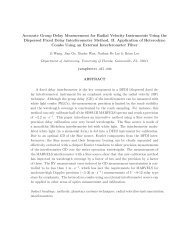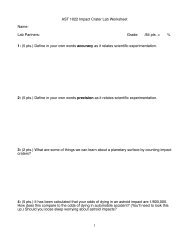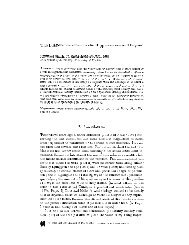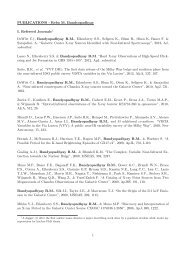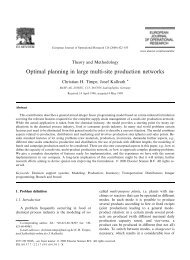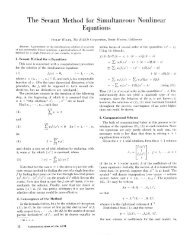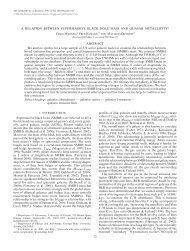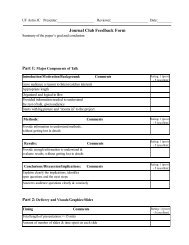Introduction to significant figures - Astronomy
Introduction to significant figures - Astronomy
Introduction to significant figures - Astronomy
You also want an ePaper? Increase the reach of your titles
YUMPU automatically turns print PDFs into web optimized ePapers that Google loves.
0.0182 years, where we keep only three <strong>significant</strong> <strong>figures</strong>. We also know that there are 1050 (1.05x10 3 ) Jupiter diameters in an AU, so a = 7.4/1050 = 0.0071 AU, where we are now limited <strong>to</strong> two sig figs. Next, we compute M = a 3 /T 2 = (0.0071) 3 /(0.0182) 2 = 0.0011 solar masses. Finally, we use our knowledge of the mass of the sun (1.992x10 33 g) <strong>to</strong> find that M = 2.1x10 30 g. Note that the final answer does not contain more sig figs than anything that went in<strong>to</strong> its calculation. On a final note, if we were <strong>to</strong> treat the above work as one long calculation, we would only have <strong>to</strong> truncate the final answer. In other words, if the converted T and a values were not <strong>to</strong> be reported and were only calculated for use in the equation M = a 3 /T 2 , we wouldn’t need <strong>to</strong> chop them off at 0.0182 years and 0.0071 AU. We could keep all the precision that our calcula<strong>to</strong>r gave us until we finally arrived at M, which would still be equal <strong>to</strong> 2.1x10 30 g. We’d still have <strong>to</strong> limit our answer <strong>to</strong> the number of sig figs in the least-‐precise input quantity (a = 7.4 Jupiter diameters), but we’d save rounding for the end of the calculation. Whether or not an intermediate quantity such as T or a is <strong>to</strong> be reported determines when you do your rounding. In the lab You Can Weigh Jupiter, for example, you are specifically asked for the converted values of T and a, so our first method of finding M is appropriate. The reason I mentioned this is that you may come up with a slightly different answer when you save all the rounding in your calculations for the end of the problem. 4



